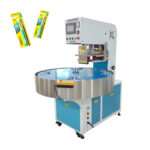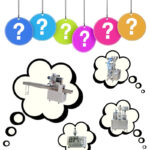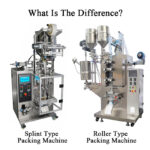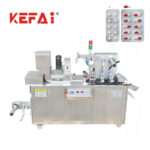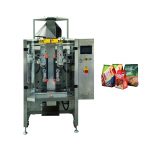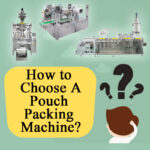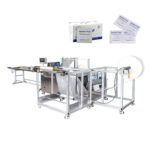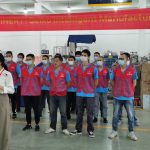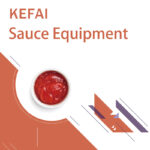Blister packaging machines seal products in a cavity, usually with a paper backing or aluminum or film seal. These blister packs can be used for just about any product, but are common packages for small consumer goods, foods and pharmaceuticals.
What are the different types of blister packaging?
Blister packaging is made from different types of polymers, such as PVC, PVDC, PCTFE, COP, and a few others. #PVC or polyvinyl chloride is the most common blister packaging material. The main advantage of using PVC is the low cost. PVC sheets of 0.25 to 0.3mm are used for making blister packs.
What is the principle of a blister packing machine?
The plastic film, such as PCV, on the uncoiler,is conveyed forward, heated to a suitable temperature, and then smooth blisters are formed on the softened plastic film.
Why is it called a blister pack?
Blister Packaging involves a variety of pre-formed and rigid packaging, usually PVC, that is primarily used for retail goods, food products, or pharmaceutical items. The basis of blister packaging or “blister packs” is the cavity or pocket in which the product sits in.
How are blister packs manufactured?
Blister packaging is a type of packaging produced by heating a sheet of plastic and moulding it into shape to form a bubble or pocket the 'blister' that completely covers the product. A traditional blister pack is known as a face seal blister and has a cardboard back.
Which film material is used for blister pack?
Blister packaging is comprised of PET (polyethylene terephtalate) or PVC (polyvinyl chloride) plastic packaging. The rugged material used for blister packs makes them ideal for a wide range of applications, such as pharmaceuticals, electronic equipment, or toy products.
How is blister packaging made step by step?
There are four main components involved in blister packaging. These are the forming film, lidding, heat-seal coating, and prints. Two main methods are used in foil forming: thermoforming and cold forming. Thermoforming is used for polymer-based materials, while cold forming is for laminated aluminum.
What kind of plastic is used in blister packaging?
Polyethylene terephthalate, better known as PET, can be used as blister plastic as well as being used for items such as water bottles, clamshell packaging and more. PET is lightweight, inexpensive, impact-resistant and clear, which makes it an ideal material for blister packaging, clamshells and plastic bottles.
What is an Alu Alu blister?
On an Alu Alu or CFF (Cold Formed Foil) blister pack both the base and lidding are made from aluminium-based film: OPA-ALU-PVC (nylon-ALU-PVC), making it possible to almost entirely eliminate water vapour permeability as well as oxygen and light ingress.
What is difference between strip and blister packaging?
The difference between a strip pack and blister pack is that a strip pack does not have thermo-formed or cold formed cavities; the strip pack is formed around the tablet at a time when it is dropped to the sealing area between sealing moulds.
What are the advantages of blister packaging?
6 Benefits of Blister Packaging
Freshness. Particularly for items that are used one at a time, having individual compartments can keep them at the ready for whenever the consumer is ready.
Dosage or serving size.
Packaging materials.
Visibility.
Security.
How are blister packs sealed?
Blister packs refer to a variety of packaging that have a preformed plastic “pocket” or “shell” (where a product sits securely in place) that is most often heat sealed to an adhesive coated paperboard card or foil backing (think single dose pills or lozenges).
Why are tablets in blister packs?
They keep tablets separate from each other to avoid crushing or damage in transit by placing each tablet into a thermoformed plastic pocket, which typically then has a lidded seal of either aluminium foil or plastic film that is attached to a paperboard back; these work together to protect against external elements.
How many tablets are in a blister pack?
They commonly hold between 5 and 15 medications per dose and are conveniently organized by time of day: morning, noon, evening and bedtime. Typically, each package contains 1 week supply of medications.
Do chemists still do blister packs?
However blister packs are not disappearing altogether. There are some pharmacies that are still providing these to care homes, and most pharmacies are still providing these to people in their own homes (as long as there is a genuine need for them).
Are blister packs better than bottles?
In terms of safety, studies have consistently shown that blister packing outperforms child-resistant (CR) bottles.
Why are tablets in blister packs and not bottles?
Patient safety & compliance: blister packs have the edge
This is because a child will be unlikely to extract more than one or two tablets from a blister, whereas once the bottle is open, the entire contents are accessible.

